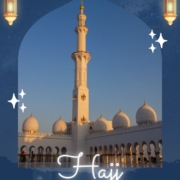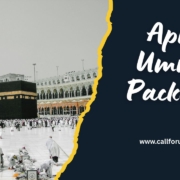How to Get Hajj Mabroor?
For every Muslim, Hajj is a sacred journey that represents devotion, sacrifice, and submission to Allah. Among the most heartfelt supplications of pilgrims is to have their pilgrimage accepted as Hajj Mabroor. But what does that truly mean, and how can one ensure their Hajj is blessed and accepted?
A Hajj Mabroor is a pilgrimage that is free from sin, performed with sincerity, and accepted by Allah. Prophet Muhammad ﷺ described it as a Hajj without showing off or committing sins, and its reward is nothing less than Paradise. While the rituals are important, the inner state of the pilgrim is just as essential.
What is Hajj Mabroor?
The Arabic word “Mabroor” comes from the root “birr,” meaning righteousness, goodness, and piety. Therefore, Hajj Mabroor refers to a pilgrimage performed sincerely for Allah’s sake, with pure intentions and proper actions, and one that leaves a positive impact on the pilgrim’s life afterward.
Signs of Hajj Mabroor include:
- Avoiding arguments, sins, and arrogance during Hajj.
- Performing rituals correctly and with humility.
- Returning home with a renewed sense of piety, compassion, and good character.
Steps to Achieve Hajj Mabroor
1. Purify Your Intention
The heart of a righteous Hajj lies in sincerity. Ensure that your goal is solely to please Allah, not to gain status, admiration, or worldly recognition.
2. Prepare Spiritually and Financially
Halal earnings are crucial when funding your pilgrimage. The Prophet ﷺ emphasized that pure wealth leads to an accepted Hajj. Similarly, preparing spiritually through repentance, prayer, and learning the rituals ensures a smooth and focused journey.
3. Follow the Sunnah with Patience
During Hajj, the crowds, physical challenges, and heat can test your patience. Resisting anger, arguments, or selfish behavior is key. The Prophet ﷺ said: “Whoever performs Hajj and does not commit obscenity or wrongdoing, he returns like the day his mother gave birth to him.”
4. Increase Dhikr and Dua
Remembering Allah through supplication, Qur’an recitation, and seeking forgiveness deepens your connection with Him. Some of the most powerful duas are answered during Arafah, a day when countless sins are forgiven.
5. Maintain Good Character After Hajj
The journey does not end when you return home. True signs of Hajj Mabroor appear when your character improves—when you show kindness, honesty, humility, and a stronger attachment to your prayers and deeds.
Connection Between Hajj and Umrah
While Hajj is an obligation once in a lifetime, Umrah is a voluntary act of worship that can be performed at any time of the year. Many believers view Umrah as a way to spiritually recharge and prepare for Hajj. Responding to a call for Umrah can serve as a stepping stone toward achieving the spiritual depth necessary for Hajj Mabroor.
Conclusion
Earning Hajj Mabroor is not only about completing rituals—it’s about transforming your heart, intentions, and actions. By purifying your intention, practicing patience, avoiding sins, and embodying good character, you can hope for Allah’s acceptance. May Allah grant every pilgrim the blessing of Hajj Mabroor and the reward of Paradise.










